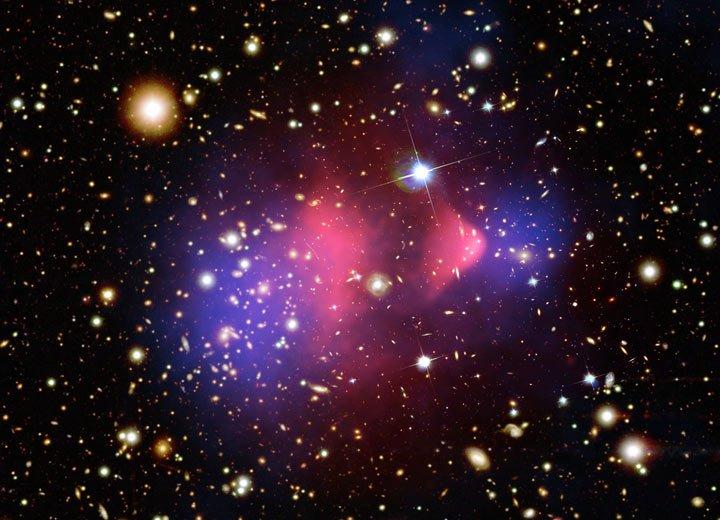New research suggests that the current theory on dark matter may need to be tweaked to explain the formation of the universe.
Dark matter composes roughly a quarter of the universe, while the rest is made up of 70 percent dark energy and 5 percent normal matter, like the stars, according to the NASA website.
Little is known about dark energy because it emits no light and cannot be seen, photographed, or measured. The only way scientists know about dark matter is because of its gravitational effects on other, visible matter.
Dark matter theory is used to explain the evolution of the universe after the Big Bang and its present construction. It is thought that dark matter provides the gravity that holds the galaxies together.
Previous theories suggested that a millionth of a second after the explosion of the Big Bang, cold dark matter particles were created. This theory is not yet proven but experiments are currently being carried out in Yorkshire and Switzerland to try to detect these particles and their effects.
Director of the Institute for Computational Cosmology, Carlos Frenk, working with the Virgo Consortium, now has data that indicates this current train of thought is incomplete, reported the BBC.
The Virgo Consortium, which is an international collaboration that creates high-tech cosmological computer simulations, has produced a simulation that visualizes the formation of dwarf galaxies. Scientists used the information on cold dark matter for the simulation, but the results did not match what can be observed in the universe.
These results show that something is wrong in the current dark matter theories because otherwise, the simulation would have created a dwarf galaxy like the ones located on the outskirts of the Milky Way.
Frenk does not believe that these results indicate that the entirety of the theory and experiments are completely off the mark. He believes that instead of cold dark matter, there may actually be something called warm dark matter that moves more quickly than its cold counterpart and formed minutes after the Big Bang, instead of a millionth of a second.
This new idea is “remarkably elegant,” and “the standard model is by no means dead,” said Frenk to the BBC. When the simulation ran using warm dark matter particles, the resulting dwarf galaxies formed the same way as the ones in the universe.
Although this theory does not completely invalidate all previous work done on dark matter theory, it does pose problems with the current experiments in this field. Scientists have been looking for particles a millionth of a second after the explosive creation of the universe, and now they must draw their gaze back to see minutes after.
Although scientists may not be able to detect warm dark matter, they may be able to disprove the existence of cold dark matter, the BBC reports. The James Webb Space Telescope, which is due to be launched in 2018, is designed to see the earliest stars. If warm dark matter exists, then the telescope will see nothing because the dark matter would not have been formed yet, unlike cold dark matter which would have already been formed.
Frenk believes that there is still a lot of work left to be done before any conclusions can be drawn.
“Dark matter is poised for big developments in the next few months,” said Frenk to the BBC.

